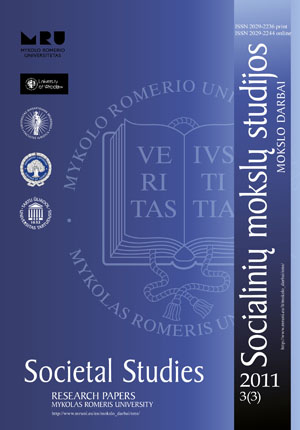Prekės ženklo vertės matavimo modeliai
Brand Equity Evaluation Model
Author(s): Miglė Eleonora ČernikovaitėSubject(s): Social Sciences
Published by: Mykolas Romeris University
Keywords: brand equity evaluation models; international dimension; Lithuanian business issues
Summary/Abstract: The globalisation process, growing competition and influence of the internet on everyday business, impacts companies to re-measure their intangible assets, aiming for the most to the brand equity, especially then they operate in the global market. This article analyzes the theoretical brand value measuring models, based on the concept that brand equity includes both financial and emotional (perceived quality) benefits to the consumer. This article aims to assess how the international dimension is reflected in the various models of brand equity, analyze Lithuanian actualities in managing and evaluating brands, also to reveal the problematic points of the theoretical models applied for evaluating global brands. Despite the availability of numerous definitions of brand equity in the literature, there is little consensus on what exactly brand equity means. It is generally described as the company’s set of brand values (brand awareness, image, loyalty and perceived quality), which create added value for the consumers, and defining the obligations associated with the brand. Most authors emphasize two traditional aspects of evaluating brand equity: the financial benefits for the company and the satisfaction of the consumer. It should be noted that in addition to a number of brand evaluations models, Aaker’s (1991) is the most popular consumer-oriented brand equity evaluation model. It has a simple approach, but measures only soft (consumer) attitudes and opinions, that hardly can be put to money value. On the other hand, BBDO Consulting Group (2001) is the most popular economic models of brand equity, which measures the company, market and the other parameters that are most relevant to the brand essence of value creation. Because of economic calculations and lots of internal information needed, this model is difficult to apply. Taking into account all advantages and disadvantages of theses model, the scientist developed composite brand equity evaluation model, “Interbrand” (1994), which includes both the measurement of consumer behaviour and measuring brand equity (economic calculations) using ranking system and less internal data needed. It should be noted, then companies are operating in global market, they should measure their brand value the international impact (including global internet operations). The international dimension is necessary to measure by evaluating not only economic or consumer oriented factors. International brand value creation dimension is distinguished in different weight and meaning just in a few models: BBDO model (2001), economic oriented and Interbrand model (2006), complex customer oriented and economic model. Lithuania’s major business success in the EU and global markets is its competitive advantage of goods and services. Despite the global crisis that Lithuanian economics is facing now, the creation of strong brands is a necessary condition for the competitive advantage in the global mar
Journal: Socialinių mokslų studijos
- Issue Year: 3/2011
- Issue No: 3
- Page Range: 967-981
- Page Count: 15
- Language: Lithuanian

